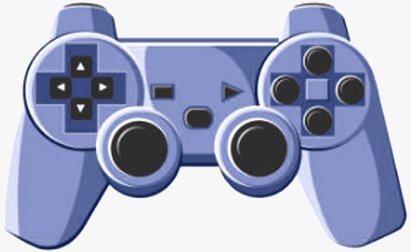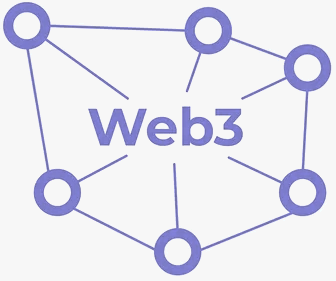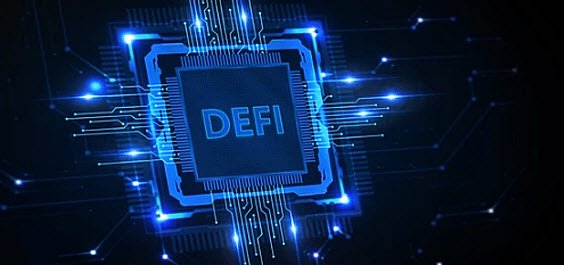Accredited InvestorsAltcoinAnatoli UnitskyAnti-Money Laundering (AML) In CryptoAPIArbitrageArtCoin TokenArticle DirectoryASICAuction Terminology GlossaryBasics of Stock Market InvestingBear MarketBest Crypto Payment Provider In the WorldBitcoinBlockchainBlockchain ConfirmationBlockchain Consensus MechanismBlockchain ForkBlockchain GlossaryBored Ape Yacht ClubBuild a Business That OutperformsBull MarketBuying SkyWay SharesByzantine Fault Tolerance (BFT) ExplainedCasascius CoinCentral Bank Digital Currency (CBDC)Centralized Crypto ExchangeCoinCoinsetCold WalletCollateralCommodity Futures Trading Commission (CFTC)Cross-Chain TechnologyCRUCrypto ExchangeCrypto GlossaryCrypto JokesCrypto Terms to KnowCrypto TickerCryptocurrencyCryptographyCryptojackingCryptounit BlockchainCryptounit GlossaryCryptounit ProgramdApp (Decentralized Application)Dead CoinDecentralized Exchange (DEX)Decentralized Finance (DeFi)Difference Between Bitcoin and EthereumDifferent Ways of Investing MoneyDigital CurrencyDistributed LedgerDo Your Own Research (DYOR)Dollar Cost Averaging (DCA)Dow Jones Industrial Average (DJIA)EncryptionERC-20ERC-721EthereumEvoScentFear Of Missing Out (FOMO)Fear, Uncertainty and Doubt (FUD)Fiat MoneyFNT Fintech CompanyGenesis BlockGlobal Unit PayGlossary of Banking TermsGlossary of Business TermsGlossary of Financial TermsHalvingHODLHot WalletHow Do I Start InvestingHow Rich is Satoshi Nakamoto?How to Create a BlockchainHow to Find Private InvestorsHow to Get Into FintechHow to Program Smart ContractsI Am Thrilled to Be a Part of This Global ProjectInitial Coin Offering (ICO)Initial Public Offering (IPO)Initial Token Offering (ITO)Innovation Basalt TechnologyInnovative Transportation TechnologiesInternational Bank Account Number (IBAN)Investing in Gold Mining StocksInvesting in Gold MiningJagerJoy of Missing Out (JOMO)Know Your Customer (KYC)LedgerLiquidity in CryptocurrencyMaker and Taker Fees in Crypto TradingMarket Capitalization (Market Cap)Meme CoinMetal Credit CardMetaMaskMillenials Now Have Access to Generational WealthMy Best Investment EverNew Digital EvolutionNFT GlossaryOff-Chain TransactionsOn-Chain TransactionsOpen Edition NFTPeer-to-Peer (P2P)Personal Loan GlossaryProbably the Best STO on the MarketProof of Stake (PoS)Real Estate Glossary of TermsReal Estate Investing GlossaryRebase TokenSecurities and Exchange Commission (SEC)Security Token ExchangesSecurity Token Offering (STO)Soulbound Decentralized Identities for Security TokensSoulbound ID Launch by Stobox Proves a SuccessSoulbound TokensStoboxStock Market GlossaryTestimonialsTether Platform and Token (USDT)UnitEx ExchangeUnitsky String TechnologiesUNTBUSDUValidatorWe Started Investing When We Were 25What are Blue Chip NFT?What are Blue Chip Stocks?What are Crypto Assets?What are Crypto Smart Contracts?What are CryptoPunks NFT?What are Digital Assets?What are Digital Collectibles?What are Gas Fees?What are Gas Wars?What are Hashmasks?What are Non Fungible Tokens?What are Non-Sufficient Funds (NSF)?What are Soulbound Tokens (SBT)?What are Stablecoins in Crypto?What are Transactions Per Second (TPS)?What are Utility NFTs?What are Utility Tokens?What Does Burning Crypto Mean?What Does Diamond Hands Mean?What Does Paper Hands Mean?What Does To The Moon Mean?What Does WAGMI Mean?What Happened to Satoshi Nakamoto?What is a 51% Attack?What is a Baby Boomer?What is a Backlink?What is a Banner?What is a Barcode?What is a Bid-Ask Spread in Crypto?What is a Block in Blockchain?What is a Block Reward?What is a Blockchain Address?What is a Blockchain Node?What is a Blockchain Oracle?What is a Blog?What is a Bond?What is a Bot?What is a Broker?What is a Business Accelerator?What is a Cash Cow?What is a Commercial Bank?What is a Commodity?What is a Con?What is a Credit?What is a Credit Limit?What is a Credit Rating?What is a Crypto Airdrop?What is a Crypto Bridge?What is a Crypto Scam?What is a Crypto Token?What is a Crypto Wallet?What is a Crypto Whale?What is a Crypto Winter?What is a Cryptocurrency Public Ledger?What is a Cryptocurrency Roadmap?What is a DAO?What is a Dark Pool?What is a Day Trader?What is a Dead Cat Bounce?What is a Default?What is a Derivative?What is a Digital Credit Card?What is a Fiscal Quarter?What is a Fungible Token?What is a Governance Token?What is a Grace Period?What is a Hard Fork?What is a Hot Wallet?What is a Hybrid Blockchain?What is a Hybrid PoW/PoS?What is a Joint Account?What is a Market Cap?What is a Merkle Tree in Blockchain?What is a Mining Farm?What is a Nonce? What is a PFP NFT?What is a POS System?What is a Prepaid Card?What is a Private Blockchain?What is a Private Key?What is a Public Blockchain?What is a Public Key?What is a Reserve Currency?What is a Ring Signature?What is a Routing Number?What is a Rug Pull in Crypto?What is a Safe Deposit Box?What is a Satoshi?What is a Security Token?What is a Seed Phrase?What is a Shitcoin?What is a Sidechain?What is a Soft Fork?What is a Spot Market?What is a State Bank?What is a SWIFT Code?What is a Tax Identification Number (TIN)?What is a Time Deposit?What is a Transaction Account?What is a Variable Interest Rate?What is a Virtual Assistant (VA)?What is a Virtual Card?What is a Virtual Currency?What is a Visa Card?What is a Whitelist in Crypto?What is a Whitepaper?What is Accounts Payable (AP)?What is AMA in Crypto?What is Amortization?What is an Accrual?What is an ACH Transfer?What is an Actuary?What is an Addendum?What is an Algorithm?What is an Angel Investor?What is an Annuity?What is an Asset?What is an ATM?What is an Atomic Swap?What is an Audit?What is an Avatar?What is an EIN?What is an Embargo?What is an Entrepreneur?What is an IDO (Initial Dex Offering)?What is an Interest Rate?What is an Internet cookie?What is an Investment Bank?What is an NFT Drop?What is an NFT Floor Price?What is an Ommer Block?What is an Orphan Block?What is an Outstanding Check?What is an Overdraft?What is Artificial Intelligence (AI)?What is B2B (Business-to-Business)?What is B2G (Business-to-Government)?What is Bartering?What is Bitcoin Dominance?What is Bitcoin Pizza Day?What is Blockchain Immutability?What is Blockchain Used For?What is BRICS?What is Business-to-Consumer (B2C)?What is C2C (Customer to Customer)?What is Capitalism?What is Catfishing?What is CFD Trading?What is Check Kiting?What is Cloud Mining?What is Communism?What is Content Marketing?What is Decentralization in Blockchain?What is DeFi in Crypto?What is Delisting?What is Depreciation?What is Digital Marketing?What is Diversification?What is Double Spending?What is Dumb Money?What is Dumping?What is Earnings Per Share (EPS)?What is Economics?What is Email Marketing?What is Equity?What is Etherscan?What is Fintech?What is Foreign currency?What is Forex?What is Fundamental Analysis (FA)?What is GameFi?What is Generative Art NFT?What is Gwei?What is Hard Currency?What is Hash Rate?What is Hashing in Blockchain?What is Inflation?What is Initial Game Offering (IGO)?What is Interest?What is Interest Income?What is Mainnet?What is Mastercard?What is Metaverse in Crypto?What is Mining in Cryptocurrency?What is Minting NFT?What is Mobile Banking?What is Money Laundering?What is NFT Alpha?What is NFT Metadata?What is NFT Rarity?What is NGMI Meaning?What is Nominal Interest Rate?What is Online Banking?What is Open-End Credit?What is OpenSea NFT Marketplace?What is Personal Identification Number (PIN)?What is Play-to-Earn?What is Polygon?What is Proof of Authority (PoA)?What is Proof of Work (PoW)?What is Public Key Cryptography?What is Pump and Dump?What is Quantum Computing?What is Refinancing?What is Retail Banking?What is Ripple?What is Sharding?What is Slippage in Crypto?What is Smart Money?What is Solvency?What is Soulbound ID?What is SSL?What is Staking in Cryptocurrency?What is Technical Analysis (TA)?What is Testnet?What is the Ask Price?What is the Better Business Bureau (BBB)?What is the Bid Price?What is the Dark Web?What is the InterPlanetary File System (IPFS)?What is the Gold Standard?What is the Lightning Network?What is the Prime Rate?What is the Sandbox?What is the Secondary Market?What is the World Bank?What is Tier 1 Capital?What is Tokenomics?What is TRC-20?What is Universal Banking?What is Unspent Transaction Output (UTXO)?What is Usury?What is Volatility in Crypto?What is Wash Trading?What is Web3?What is Whisper?What is XRP?What is Zero-Knowledge Proof (ZKP)?Who is Beeple?Who is Satoshi Nakamoto?Who is Vitalik Buterin?Why Tokenization is a Safe HavenWhy You Should Try Your Hand at Trading
What is GameFi?
- Home
- NFT Glossary
- What is GameFi?
Imagine the potential of earning real-life money solely by playing video games in the near future, rather than just in-game currency, which can be used to cover essential expenses like bills and food.

This is the essence of GameFi, an emerging player in the Web3 realm, and it's a prospect that many of the industry's foremost participants believe is rapidly approaching.
What is GameFi?
GameFi is a new and emerging concept in the world of gaming and blockchain technology. It stands for Game Finance, which refers to the integration of decentralized finance (DeFi) protocols and concepts into video games.
GameFi allows players to earn and spend cryptocurrencies within the game environment. In other words, it allows gamers to earn real-world money while playing video games. This is made possible by leveraging the blockchain technology, which provides a transparent and secure way to record transactions and ownership of in-game assets.
One of the primary aspects of GameFi is the creation of non-fungible tokens (NFTs) for in-game assets. NFTs are unique digital assets that are verified on the blockchain and can represent anything from in-game items, such as weapons or clothing, to characters or even entire virtual worlds. This allows for the ownership of in-game assets to be recorded on the blockchain and traded on various marketplaces.
GameFi is not limited to a particular genre of video games. It can be integrated into any game that has in-game assets that can be tokenized. Thus, it has the potential to revolutionize the gaming industry by enabling players to earn money by playing games they love.
In addition to earning real-world money, GameFi also provides a range of benefits to game developers. By integrating DeFi protocols into their games, developers can generate revenue through transaction fees and other DeFi mechanisms. Moreover, GameFi can also help reduce fraud and increase transparency in the gaming industry by recording all transactions on the blockchain.
A Brief History of GameFi
The term GameFi may have only gained popularity recently, but its origins can be traced back to the early days of Bitcoin. In fact, GameFi's history goes back almost as far as the world's first cryptocurrency.
Early Minecraft servers integrated with BTC, the 2013 website Gambit.com, and games like Bombermine and peer-to-peer services allowed gamers to monetize mainstream titles with BTC. These represent some of the earliest examples of what we now consider GameFi.
With Ethereum's launch in 2015, video game developers had new opportunities thanks to the sophistication of its programming language. For the first time, programs could be stored and executed on-chain, enabling the creation of applications. Among these were blockchain games like CryptoKitties, which leveraged the newly defined ERC-721 standard to represent in-game assets as non-fungible tokens.
Although interest in NFTs has grown, it was not until November 2019, when the founders of MixMarvel delivered speeches at the Wuzhen World Blockchain Conference, that the term GameFi was coined. The concept gained more attention when Andre Cronje, the founder of Yearn, used the term in a September 2020 tweet. Since then, GameFi has been used with increasing regularity to describe games that integrate financial elements enabled by blockchain technology.
As blockchains optimized for performance have been launched, we have seen tremendous innovation in the GameFi sector. Today, we are beginning to see the fruits of these innovators' efforts, and blockchain gaming is growing exponentially. The future of GameFi looks bright, and it is likely that we will continue to see advancements in this area as the gaming industry continues to evolve.
The Bottom Line
The adoption of blockchain and Web3 technologies in the gaming world is not slowing down; in fact, it is accelerating.
Global decentralized networks, community-driven DAOs, code-based governance through smart contracts, and token-based virtual economies are all components that redistribute power and wealth into the hands of the players who arguably have the largest stake in the industry.
It goes without saying that players are crucial to the gaming industry. Without them, the industry would not exist. Similarly, without developers constantly creating innovative games that players love, there would be no reason for them to continue playing.
The shift towards Web3 technology represents a rebalancing of power and a move towards a more equitable relationship between developers and gamers. This creates a more harmonious environment for all involved.
Related Articles

What is Initial Game Offering (IGO)?
As the popularity of GameFi grows, IGO is becoming increasingly popular among crypto investors, allowing them to purchase a blockchain game's NFTs or tokens during its...

What is Web3?
Instead of a Web dominated by powerful tech corporations, Web3 promotes decentralization and is being developed, managed, and possessed by its users.

Decentralized Finance (DeFi)
Yield farming, also known as liquidity mining, is a popular activity in the DeFi ecosystem that involves seeking profits through various DeFi projects by participating in...
- Home
- NFT Glossary
- What is GameFi?